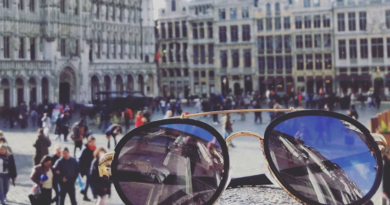Film Review: Europe at Sea Premiere
Europe at Sea starts from the premise that “the world is more volatile than at any time since WW2”. It charts the development of European geopolitical and defence strategies through the work of the woman overseeing them, Frederica Mogherini. It enters the command of Operation Sophia – the EU’s mission to stop human trafficking in the Central Mediterranean – and the expansion of EU defence power. It is highly dramatic, an “in-the-moment” film that well conveys the intense pressure on the EU response to events like Syria, North Korea and Trump, as well as Brexit and discord within the bloc itself.
Filmmaker Ananalisa Piras was granted unprecedented access to Mogherini’s schedule, following her over 2 years. “You can be human and strong at the same time”, Mogherini is quoted as saying at the start of the film, and as we see her at work in her office (an Obama election poster and her children’s drawings on the walls) and in meetings with world leaders like Russia’s Putin, Europe at Sea tries to make that seem true of its subject. Especially in dealing with migration: Mogherini is presented as being emotionally affected by the stories of the many thousands of migrants crossing or trying to cross from Libya. She speaks in the film “as a mother myself” to insist that “if a mother puts her children and herself on a boat in those conditions,” they must be fleeing something terrible.
Nevertheless, Europe’s use of foreign policy to try to stop migration can be criticised. Europe at Sea glosses over the fact that Europe’s priority is cutting migration altogether, not just protecting people from traffickers. It shows EU staff working in Niger to boost security on the premise that this will allow the country to develop economically and reduce migration, but ignores NGOs’ warnings that this means EU development policy is turning towards militarisation instead of helping the poorest. Only a passing reference is given to the controversy surrounding EU collaboration with the Libyan coastguard to stop migrants – a collaboration that the UN Human Rights Commissioner, among others, has condemned.
“We have set up a system to manage migration and reduce the number of deaths. We now need to keep investing in this – at sea and at land, with security and development” @FedericaMog at #EuropeAtSea screening pic.twitter.com/aoOGaQCfkv
— Lorenzo Biondi (@lorbiondi) March 10, 2018
The picture that emerges from Europe at Sea is incomplete: EU foreign policy has accelerated massively but it doesn’t fully explain what that means. Perhaps this is deliberate: Annalisa Piras admits it was difficult to convey in an understandable way the extraordinarily complex “puzzle” of EU foreign policy, and she had to cut so much that there would be enough material for a second movie. Mogherini, who was present at the premiere at Bozar, said that dealing with problems bit by bit, “putting together the pieces of the puzzle, with no silver bullet” was “a very European way”. Europe at Sea invests a great deal in making its subject seem dramatic (Mogherini, whose father was a film director, herself praised its cinematography). Given the intense pace of change that is justified. But, with the far-right on the rise in Europe, not least in Mogherini’s native Italy, the biggest drama may be yet to come.
Europe at Sea is now available to watch online on ARTE



